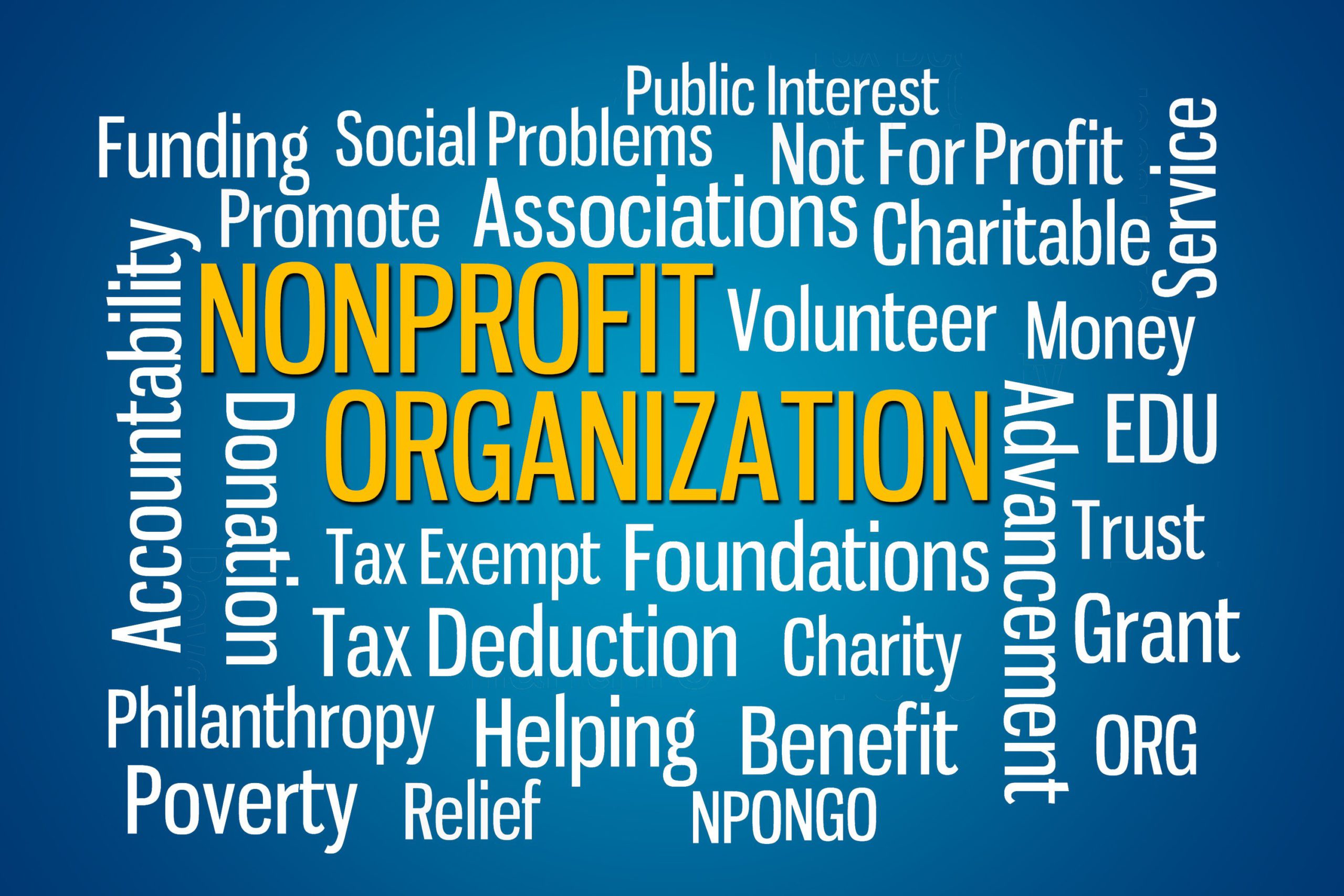Nonprofit marketing is, in many ways, no different than any other kind of marketing. You must become known, continue to make yourself known, and give people something to care about that inspires them to take action. Whether that action is donating, volunteering, signing up for your email list, attending an event – those are just the details of your individual campaigns.
But at its core, nonprofit marketing requires you to stay on top of people’s minds who care about your mission. They must see your organisation as part of their lives. In today’s super-fast media and online climate, this requires continuous effort and smart strategic planning.
The good news is nonprofits Organisation of any size can effectively market and promote their organization online. What follows are nine nonprofit marketing and promotion strategies you can use to grow your organization and make the world a better place.
A recent partnership between American Express and The United Nations aims to educate people about their philanthropic money-saving trips. As a nonprofit with an appeal to travellers, you can benefit from the Amex partnership by expanding on the airline’s platform.
Promoting the United Nations is a great idea for nonprofits of any size, and you should consider doing so to grow your organisation’s profile and support base. Higher traffic and page views can translate to increased online and brick and mortar support for your work. You can also pose as a travel expert in your region, helping people plan their own dream vacation.
You can promote your charity through social media. Alongside traditional forms of marketing, these power tools are easy ways for smaller organizations to get creative with their campaigns and attract new listeners.
A good way to promote your charity on Twitter is to list all of your upcoming events in multiple places. If you’re speaking on a panel at a conference, you can also post the event directly on your Twitter feed. When checking in on social media, mention your non-profit and the date of the upcoming event, as well as who will be attending.
You can also tweet about your upcoming events in Facebook. Don’t hide behind link-bait, and do not change your event time or location to please the masses. Doing so can create a poor impression for your followers, and they may come to resent your regular posts. Be transparent with your followers, and let them know about the event so they’re notified and able to attend without missing a beat.
There are many ways to spread the word about your upcoming event. If you’re running a fundraising event, you can promote the details on your website and social media accounts to share with friends and family. Simply saying you’ll host a barbecue at your home for 10 friends tends to get people excited to attend.
Consider posting the event details in your local newspaper, or online at your community’s news page. This is an especially effective method of getting the word out, especially when the event is of interest to the local community. This is one example of how your readers can help your cause.
You can also promote your upcoming event through Google or Bing, and if your event takes place locally, you could find a local news outlet interested in reporting on it.
You can also host an open house or event open to the public to share your organisation.
Other ways to promote your event are through paid advertisements. You can hire a waitress or bartender to serve your event for free. Instead of placing the praise for the event on social media, it’s best to play it off. Here are some more options:
You can also secure an interview with a local radio station, and consider being interviewed on television. Be wary of getting caught up in the drama of the interview, and stick to your values and the message of your non-profit. Consider these questions:
It’s obvious that these methods require a lot of resources and effort. If your organisation is smaller, you’ll probably need to use paid advertisement to be noticed. But if you’re already familiar with the talk radio or local news, consider booking a room at a local community hall and giving a talk. This method is low-cost and makes effective use of the community you’re already located in, and make use of it to promote your non-profit.
You can promote your campaign on social media with a cause or purpose message, which can be the same message you use in any of your direct marketing programs.
There are also social marketing strategies that work best for organisations that have a strong branding message. This is typically the case for non-profits that work in a specific space or industry, and want to position themselves in relation to other organisations or charities in that category.
When you’re marketing any charity, the most successful run the gambit from offering free services to meeting a financial need. Social marketing takes these ideas and, while keeping the core branding message consistent, offers an opportunity to connect with customers in a more personalized way. These services are not selling the services of your organization, but instead an opportunity to connect with some of the people whose lives your organisation is already changing.
You can reach out to your existing customers, current and former volunteers, and supporters. This is slightly different than running a member rescue program or paying your donors out of pocket, as you’re asking them to take the time to delve a bit deeper into what your organisation is doing.
This is an easy way to expand your donor base that uses your existing audience as a resource.
You can promote your non-profit and the work of others empathetically on your platform. This is a more genuine type of social marketing, as the message will be from the heart and likely relate to recent events in your organisation’s life. For example, your organisation may be dealing with an ongoing problem, and you can use this as an opportunity to speak out for what you stand for.
You can also use a cause-related message to post your message. This is done by using an image that relates to a specific cause, such as raising awareness about breast cancer, or sharing the story of how your organisation can help people with an obesity problem lose weight. These types of messages allow you to communicate your nonprofit’s message in a way that’s relatable to others.
Social marketing is a powerful way to reach your audience, grow your organisation, and engage in conversations that promote your mission. Taking the time to become a spokesperson for your organisation can help promote your mission, expand your donor base, and bring new opportunities for your organization to begin making a difference.
Use social media as a tool to share your cause, sell your services, promote your programs, and raise awareness about a particular charity or cause. This can be used in conjunction with your traditional marketing techniques to promote your charity and the work of your organization on social media.
Being connected to the larger world is a great way to reach new audiences, raising the awareness and understanding of your organisation.
Take care to watch for comments that could damage your image or brand. Misinformation spreads fast on social media, so think twice before putting your nonprofit out there on your website.
Consider cleaning up after you’ve posted to ensure that you’re sharing only positive messages.
Social marketing is focused on enhancing your brand, not pushing sales or using your message to promote a product or service. In other words, don’t think of this approach as simply advertising your organisation to make a sale.
Putting a social media policy in place in advance can help your organisation maximize its potential online.
Springing into social media without a clear plan can only lead to catastrophic results. Learn to use social media as a tool to help you with your brand and fundraising efforts, rather than a channel you use to promote a product.
As many of the brand image examples in this book will show, social media can help to spread your message or your organisation’s work at large.
Social media marketing is used differently by different corporations, so be sure to consider when and how to use it to promote your non-profit, and also consider the policy you want to set in terms of marketing and promotion.
Being a social media advocate for your social groups will not only help you to raise awareness about your organisation and the cause you’re supporting, but it will also help to spread the word about you or your non-profit organisation.
Maintain a sense of online professionalism in all of your social media activities. The better your reputation online, the more effective you’ll be as an advocate for your organisation and the more likely people will be to purchase your products or donate to your cause.
Many social media platforms offer more visibility than others, so be sure to consider the best social media channels before selecting which one is best suited for your non-profit.
In many ways, social media should be seen as a tool to help your non-profit organisation make a difference in the world.
As well, social media can be used to advocate for causes or to raise awareness about your nonprofit’s mission.
Other common uses of social media for marketing include raising awareness about the work of your organisation and the products you offer.
A charity might use social media to raise awareness about the audience that it has reached or to use it to promote your organisation’s work, such as spreading the word about where you’re doing your fundraising or about the announcement your charity made on Facebook.
When using social media for marketing purposes, be sure to consider the type of charity you manage, the products and services you offer to fundraise for, and other variables that can help to promote your organisation.
Consider when you’ll be using social media, as it might be better to look at a social media platform in the mornings when there’s less communication on the internet, or at certain times of the day when you want to attract more viewers.
Social media can help leverage your non-profit’s established social media accounts to share your messages more effectively.
By using social media to promote your nonprofit, you can post messages in order to promote your organisation and the work that you’re doing, gaining more people to support your cause.
While there are many pros to using social media for marketing purposes such as increasing awareness and fundraising, there are also more cons to consider, such as spamming and causing a disruption online. Be sure to use social media in a way that does not negatively impact the way people use the internet.
As well, your social media strategy should be used strategically, with full consideration of the image or brand you’re trying to create for your non-profit website.
Your social media strategy should be used to promote your organisation and your mission, as well as being used in conjunction with other marketing techniques.
Be sure to keep up with the social media trends so you can be in the know about what’s happening and how to use these social media features to best promote your non-profit.
Social media can help your non-profit improve overall awareness of your organisation and gain a following or a link to your site.
There are different social media platforms to consider, as their benefits ebb and flow with changing needs.
As well, be mindful of privacy policies and important decisions, such as whether to directly share contact information or avoid doing so.
Practice social media by doing a thorough look at the pros and cons, and make sure you’re using social media as just that, social.
In time, your organisation will gain followers and help your cause to become more widely known. Use social media to help spread the word about your non-profit organisation as you can.
Social media can be used to help you to raise awareness about your nonprofit organisation, but it also needs to be used in the right way.
Use social media to help promote your organisation, and make the most of it.
Social media platforms can be used to help to make the most out of your non-profit’s branding efforts.
Social media is a great way to keep in touch with your volunteers, donors, and other social exchanges.
Create social media pages on Facebook, Twitter, and YouTube to help promote your organization.
Keep in mind that social media is no longer just about posting Tweets and messages on Twitter, as it’s a little more technical than that.
When using social media, think of the social media platform that will best promote the work you’re doing and the job you need to do in order to raise the most money and awareness.
Using social media for marketing purposes can help to raise awareness of your non-profit organisation, and is usually a good way to promote certain organisation brands and products.
As well, social media is a great way to raise money for your non-profit.
Social media can be an excellent place to promote products or services you are selling online, but it can also be used to raise awareness about your organisation and what it does to help your cause.
Some examples of this include social media photos or videos showing to what the organisation or product did to help raise awareness of their cause, as well as having a platform presence online and creating a sense of connection to your organisation.
Social media can be used to help your non-profit raise money, awareness, and to promote the work you’re doing.
As well, social media helps to raise awareness about your organisation, so it makes sense to use this way for fundraising as well.
Some charities use social media to raise awareness of their charity and the work they do to help their cause, as well as helping them to raise money over Facebook, Twitter, or other platforms.
















